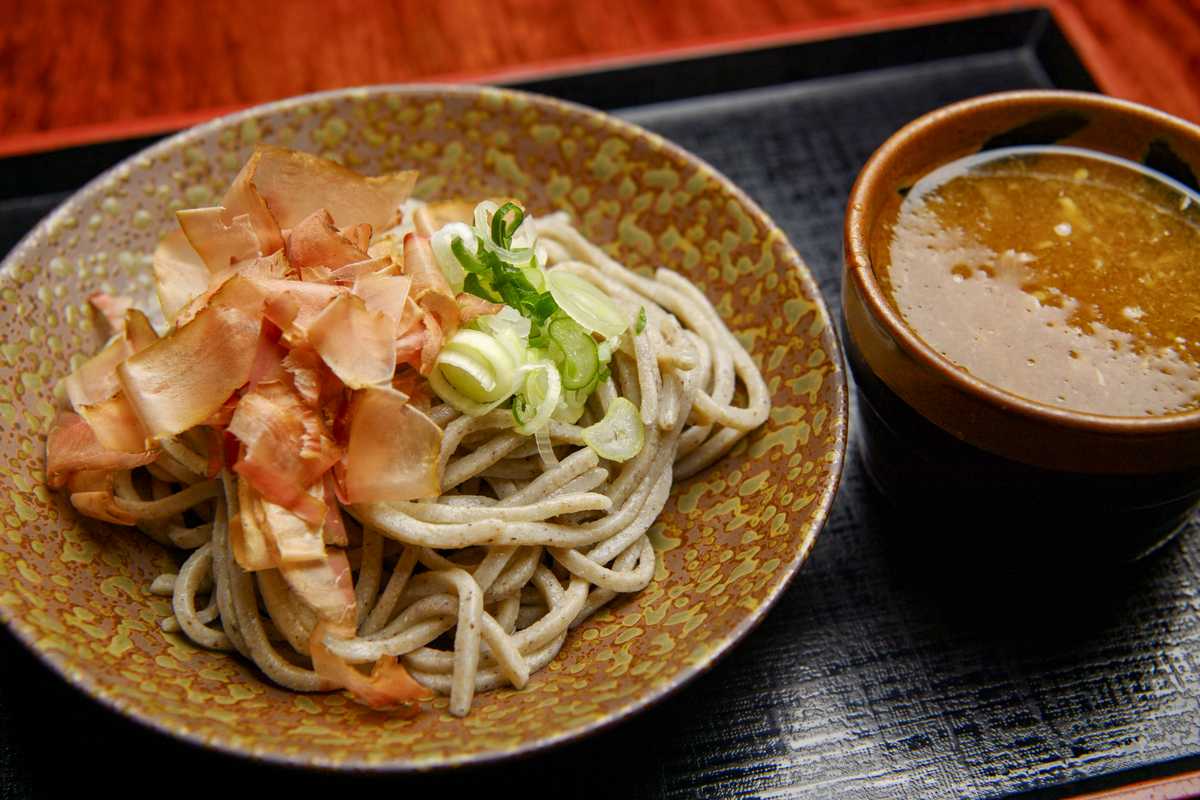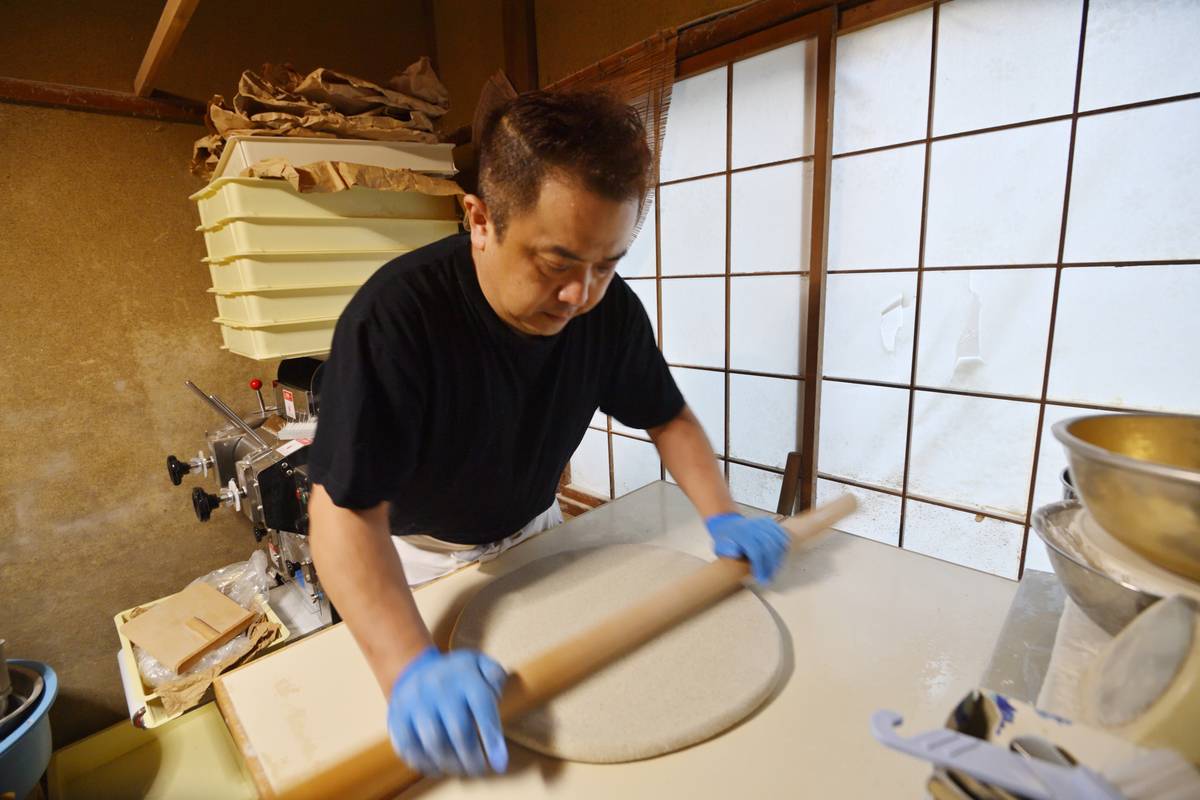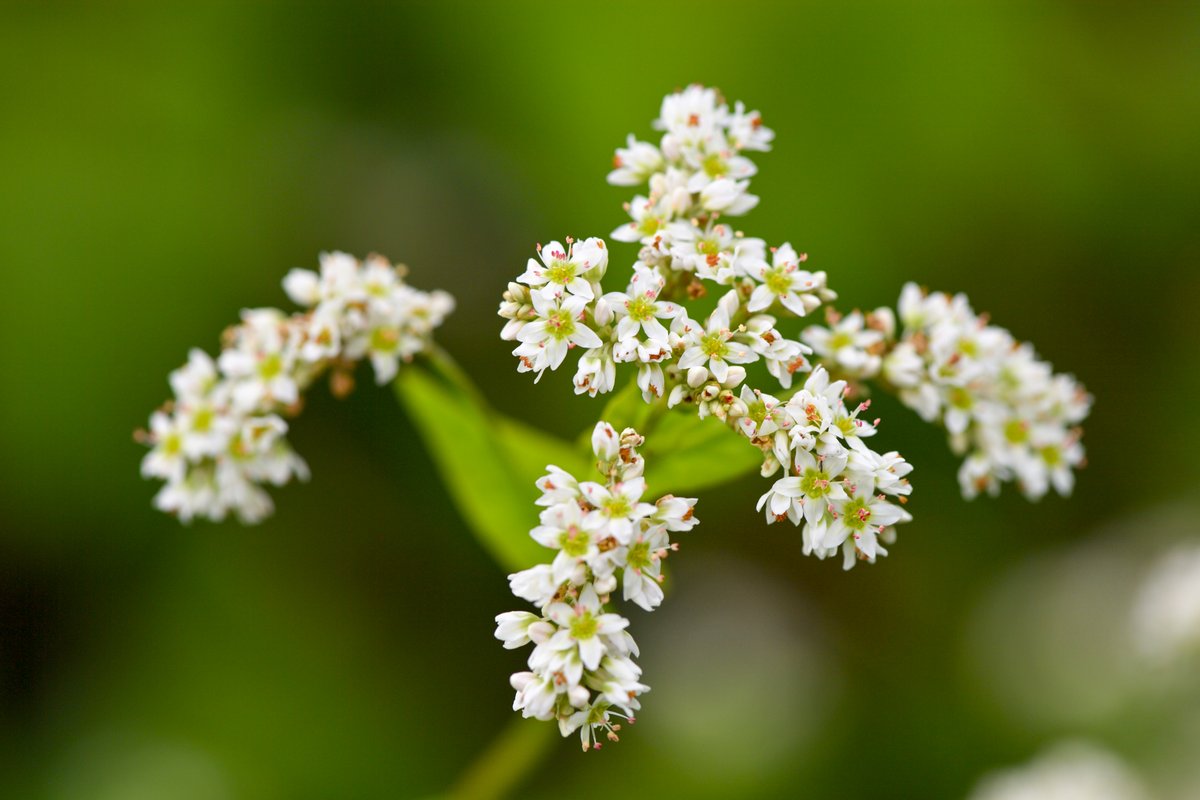Moriroku’s special soba seiro (plain soba noodles served on a seiro tray). The dish comes with condiments such as sea urchin and chopped yuzu skin.

13:19 JST, November 26, 2024
It’s exciting in this season to travel to a region famous for soba to enjoy the freshly made and boiled noodles served in their traditional way. In search of the authentic taste of Echizen soba, I visited Fukui Prefecture, a place where soba culture is firmly established.
“Shin-soba” refers to soba made from buckwheat harvested in autumn, generally between October and November, and served for one to two months after the harvest.
Echizen soba is eaten mainly in the Reihoku area of the prefecture.
Farmers in Fukui Prefecture cultivate indigenous buckwheat varieties, and many local restaurants use the flour of these varieties to make soba.
The native varieties have been grown in this area since long ago. The seeds are small but packed with flavor, and they have a rich aroma. Unlike improved varieties, native varieties do not ripen at the same time. However, this characteristic is said to make the varieties special.
“The aroma and flavor are said to become deeper when fully ripened seeds and young, unripe seeds are mixed together,” said Tsubasa Hatano, who worked in Echizen city’s agricultural policy division when the Ryoko Yomiuri interviewed him.

Oroshi soba served at Edoya, a restaurant popular for its local cuisines. It’s regular-size oroshi soba is ¥600.
Buckwheat native to Fukui Prefecture is highly regarded, and the prefecture has been ranked first three times in a row since 2020 in the “delicious soba production region grand prix,” run by a private group working to preserve soba in Japan.
Echizen soba is often eaten in the “bukkake” style, with dashi broth poured over cold noodles topped with grated daikon, chopped negi green onions and bonito flakes. The dish is called oroshi soba.

Edoya owner Akira Kurizuka makes soba every day using buckwheat and flour from Fukui Prefecture.
The buckwheat is milled with its seed coats and, therefore, Echizen soba noodles are usually dark and thick. The pungent grated daikon complements the broth, and the soba’s flavor spread in my mouth as I slurped the chewy noodles.
Emperor Showa visited Echizen City in 1947 on a visit to regional areas and enjoyed oroshi soba. Upon his return to Tokyo, he is said to have reminisced about the taste, saying, “That soba in Echizen…” His remark is said to have led to the widespread use of the term “Echizen soba.”
Visiting the many soba shops
The birthplace of Echizen oroshi soba is said to be Echizen City, where the former provincial capital of Echizen — now northern Fukui Prefecture — was located, and the city office now stands on the site of the former Fuchu Castle.
In 1601, Honda Tomimasa, the Tokugawa clan retainer who was appointed as the castle lord, brought a soba chef from Kyoto’s Fushimi area to have him make the dish. At that time, the chef came up with the idea of eating the noodles with grated daikon, and that is said to be how oroshi soba originated.
There are over 40 soba restaurants in Echizen today. It is a true comfort food of the people of Fukui Prefecture, and I went to eat the soba in its birthplace.
I got off the train at Echizen-Takefu Station, which opened in March as part of the extension of the Hokuriku Shinkansen line, and saw buckwheat farms stretching out in front of the station.
“Buckwheat fields are a typical agricultural landscape in Fukui,” Hatano said. “To commemorate the extension of the Shinkansen line, we worked with farmers to create this landscape for visitors from outside the prefecture to see.”

Despite their dainty look, buckwheat flowers have a distinctive fertilizer-like scent.
Dainty white flowers covered the fields when I visited. As the flowers finish blooming, small seeds form, and the shin-soba season starts.
In Echizen, shin-soba will be served from mid-November.
Masaharu Hori, the fourth-generation owner of the long-established Moriroku said, “Freshly made shin-soba is a light, yellow-green color with a strong aroma, and it’s sweet.”
On top of a number of authentic Echizen soba restaurants, there are places for visitors to learn about the city’s history. Visitors can make soba at Echizen Soba Village and learn about the process for making washi traditional Japanese paper at Echizen Washi no Sato.
***
Japan Tourism is presented in collaboration with Ryoko Yomiuri Publication, which publishes Ryoko Yomiuri, a monthly travel magazine. If you are interested in the original Japanese version of this story, click here.
This post was originally published on here







